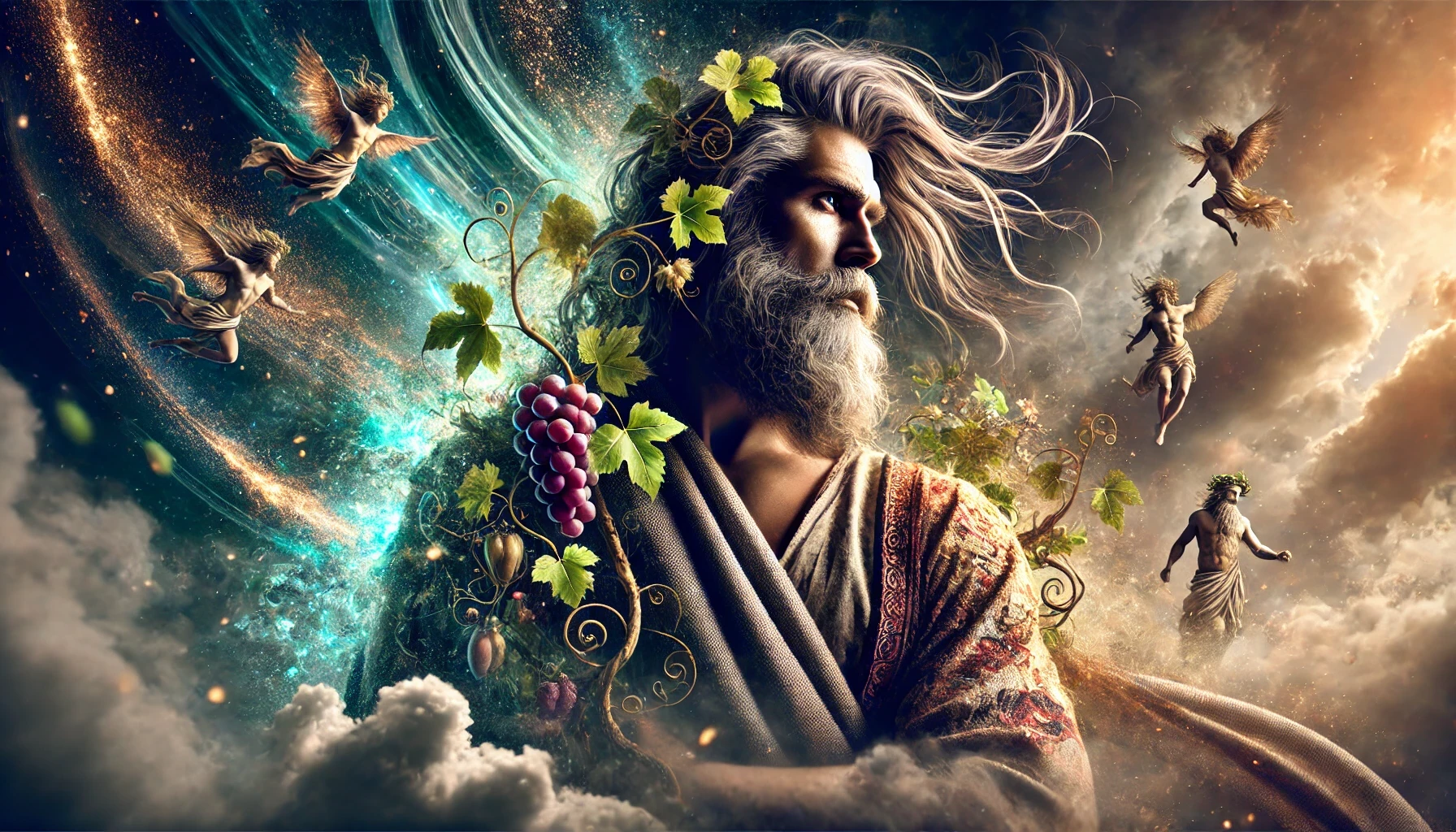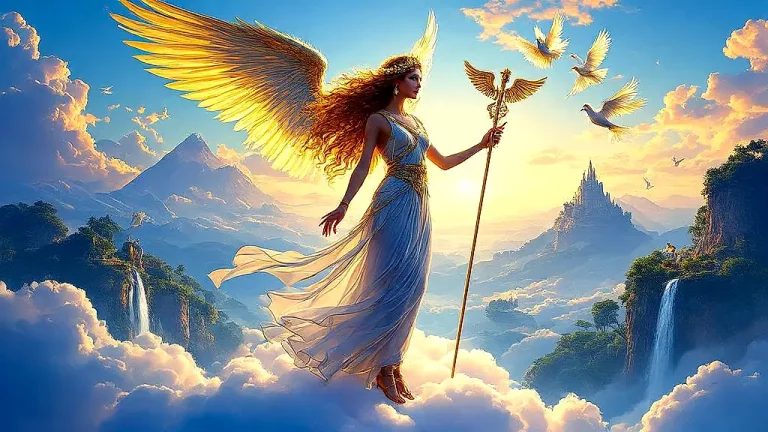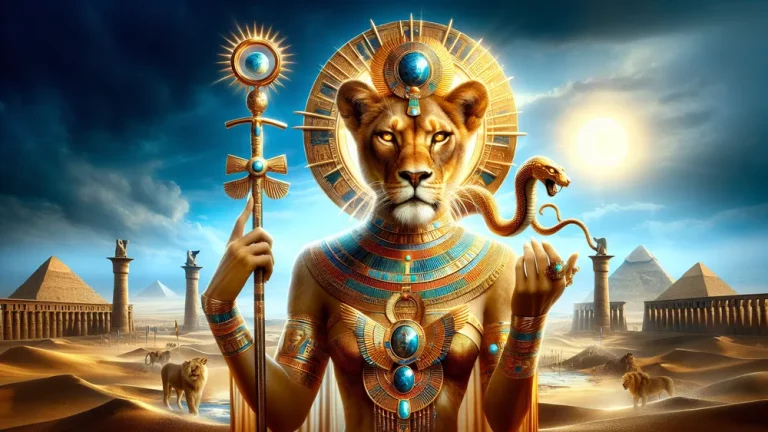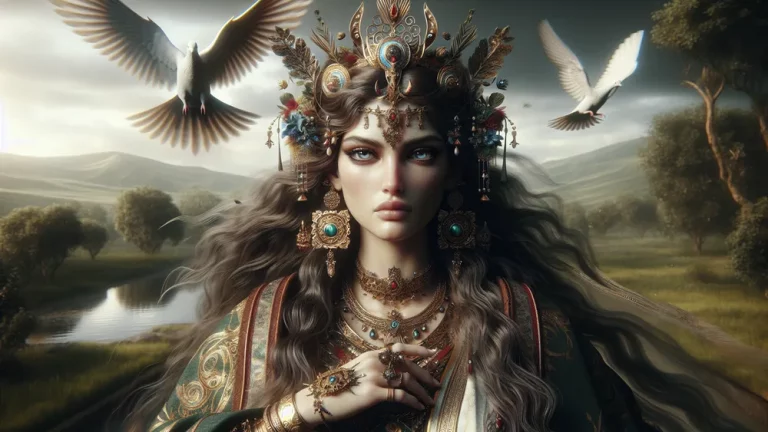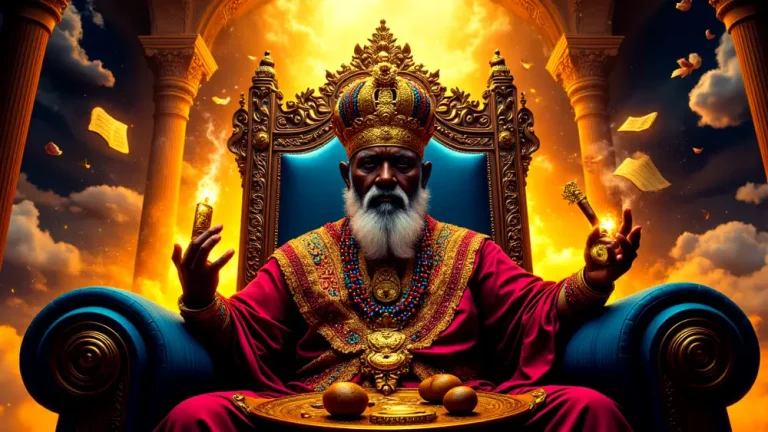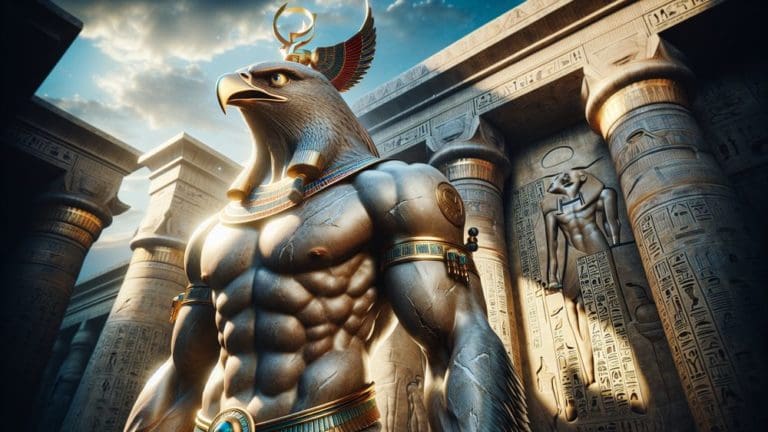Dionysus: Greek God Of Wine, Festivity, And Madness
When you think about Greek stories, names like Zeus, Hera, and Poseidon probably come up first. But the group of Greek gods is large and varied, each god having different importance and showing various aspects of life and nature. An interesting figure, who is the god of wine, festivity, and madness, is Dionysus. Imagine a lively party, with energy you can feel.
Key Points:
- Dionysus, known as Bacchus to Romans, is a Greek god linked with wine, parties, madness, and theater.
- Born from Zeus and a mortal woman, Semele, Dionysus’ unique birth story is tied to his many-sided nature.
- Dionysus is symbolized by elements like the thyrsus (a staff with a pinecone), grapevine, and leopard skin, each mirroring aspects of his divinity.
- Followers of Dionysus, often women called Maenads and men known as Satyrs, held wild and ecstatic worship practices and festivals to honor him.
- Dionysus had a mix of relationships with other Greek gods, ranging from his supportive father Zeus, to his jealous adversary Hera.
- Many stories about Dionysus revolve around his divine power and adventures, like his encounter with King Pentheus and his trip to the underworld.
- Dionysus’ influence is seen in ancient art and literature, often featuring him as a figure of both joy and chaos.
The host sets the mood, and wine flows freely – this is what Dionysus means. In this blog post, we will look at the different sides of Dionysus by looking into his beginning, symbols, followers, and the interesting myths around him.
If you are a longtime fan of these stories or just getting started, this complete look will help you understand Dionysus more and his lasting effect on both old and new culture.
Dionysus: Overview and Key Facts
| Key Aspect | Description |
|---|---|
| Name | Dionysus (called Bacchus in stories by Romans) |
| Areas | Wine, festivity, madness, theater, and ecstasy |
| Parents | Zeus’s son (who is king of the gods) and Semele (who was mortal) |
| Birth | Coming from Zeus’ thigh after Semele died; often called twice-born |
| Symbols | Thyrsus (which is a staff topped with a pinecone), grapevine, ivy, leopard skin |
| Animal Associations | Leopards, serpents, and bulls |
| Followers | Maenads (women), Satyrs (men), and other worshipers |
| Major Festivals | Dionysia and Bacchanalia |
| Important Stories | Birth and childhood, journey to underworld, encounter with King Pentheus |
| Effect on Culture | Influenced theater, changed literature, also impacted art; seen as a sign of freedom and disorder |
Getting to Know Dionysus
To really understand Dionysus’ part in Greek stories, it’s important to look more closely into who he is, where he comes from, and the signs that tell us who he is. Let’s begin by checking out who Dionysus is. What makes him a different and interesting god?
Who is Dionysus?
Dionysus, also called Bacchus by the Romans, is a many-sided god who has a big influence over different parts of life and culture in old Greece. Think about the life of a party. The one bringing energy, joy, and a bit of chaos – that’s Dionysus. Mainly, he is known as the god of wine, fun, and chaos, but he also affects theater, and he brings joy. To understand his importance, think about how wine can make a party better and also lead to unpredictable things. Dionysus stands for these two things. His main qualities and areas include:
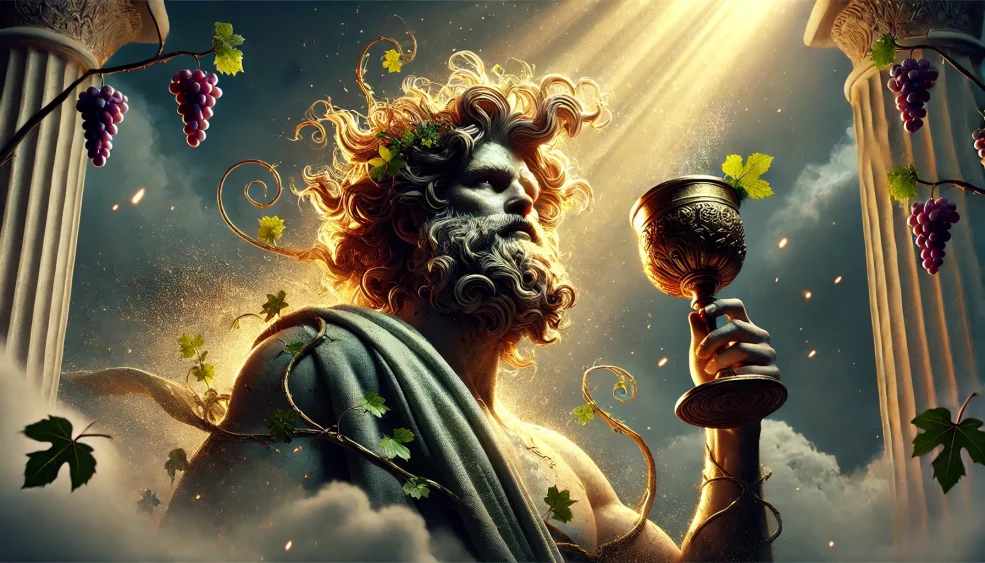
- Wine: Which means both joy and chaos.
- Festivity: That stands for celebration and group joy.
- Madness: Which shows the unpredictable and wild side.
- Theater: He supports dramatic arts.
- Ecstasy: Letting followers go beyond normal experiences through ecstatic worship.
Dionysus, or Bacchus, is a lively god known for wine, parties, chaos, theater, and ecstatic experiences that go outside the norm.
Dionysus’ Beginnings and Origins
To completely understand the main idea of Dionysus, it’s important to look at the myths about his birth and early days. Let’s look at the interesting stories which tell us about his beginnings and events.
His Parents and Birth Stories
The story of Dionysus’ birth is very interesting. It involves the actions of the gods and unusual happenings. He is the son of Zeus, the king of the gods, and Semele, a human woman. A strong person like Zeus falls in love with a human. Imagine that. This union was bound to get attention and make others jealous. Hera, who was Zeus’ wife, made Semele ask Zeus to show his real self.
Mortals, however, could not see gods without dying. Zeus, who was quick to act, unwillingly showed his true self, and Semele was overwhelmed by his godly light. But Zeus saved their unborn child by sewing him into his thigh. This let Dionysus be twice-born – first from his mother and then from Zeus. This unique birth story not only shows Dionysus’ divine heritage but also means his complex and many-sided nature.
Early Years and Travels
Dionysus had a remarkable early life, just like his birth. It was with lots of travels and events that shaped his character and godly job. Raised by nymphs on Mount Nysa, Dionysus was hidden from Hera’s anger. Imagine a child sent to a far, safe place. It keeps him away from danger.
When he grew up, Dionysus traveled a lot, going across known places from Egypt to India. These trips were not just sightseeing tours but were filled with challenges that tested his toughness and expanded his reach. For example, during his travels, he introduced the growing of grapevines and winemaking to different cultures, spreading joy and celebrations.
He also dealt with people who opposed his godly nature, like the Thracian king Lycurgus, who was made mad for defying him. These early experiences not only made sure Dionysus was known as a god of wine and fun but also highlighted his link with madness and change.
Symbols and What They Mean
To really get what Dionysus is about, it’s important to look into the symbols that mean his god-like qualities and effect. We should examine the different symbols related to this interesting god.
Common Symbols of Dionysus
Dionysus has several symbols that capture his essence and areas. Among his symbols, the thyrsus is the most well-known. It’s a staff with a pinecone on top and often covered with ivy. It means prosperity. It also stands for fertility and fun. It is like a wand. Another important symbol is the grapevine. This directly ties to his role as the god of wine and growing grapevines. It stands for growth, lots, and the power of wine. Also, the leopard skin is often seen on Dionysus or his followers. This means his wild and untamed nature because leopards were seen as exotic and fierce animals. Here is a list of these symbols and their meanings:

- Thyrsus: A staff with a pinecone, meaning prosperity and fun.
- Grapevine: Stands for growth, lots, and the power of wine.
- Leopard Skin: Means wildness and the untamed parts of nature.
Animal Symbols
Dionysus is linked with several animals that show parts of his godly image. The leopard is one of the most well-known. It stands for the wild nature of the god and his followers. Think of the leopard, which shows raw freedom and wildness, much like Dionysus himself. Another important animal is the serpent, often seen in his myths.
The serpent means rebirth, change, and the cycle of life, which reflect Dionysus’ own experiences of death and rebirth. These animals not only highlight the different traits of Dionysus but also serve as strong symbols in the rituals and pictures linked to his worship.
Animals like the leopard and serpent represent Dionysus, symbolizing his wild nature and connection to rebirth and change.
Dionysus’ Followers and How They Worship
Knowing the symbols and animals linked with Dionysus gives us an idea about his godly nature. But how did people show their loyalty? We can look at the different ways they worshipped him.
The Cult of Dionysus
In ancient Greece, the Cult of Dionysus, also called the Bacchus cult, started and spread throughout the Mediterranean. This cult was known for its ecstatic worship practices. It often included wild dancing, music, and drinking wine to reach a state of divine joy.
Think of a modern-day music event where people lose themselves in the rhythm and energy; this is somewhat similar to what Dionysian followers sought. The rituals aimed to break social norms and personal barriers, which allowed participants to connect with the divine on a deeply personal level.
These practices were not just about revelry, but they were also thought of as a way to reach spiritual freedom and closeness with Dionysus himself.
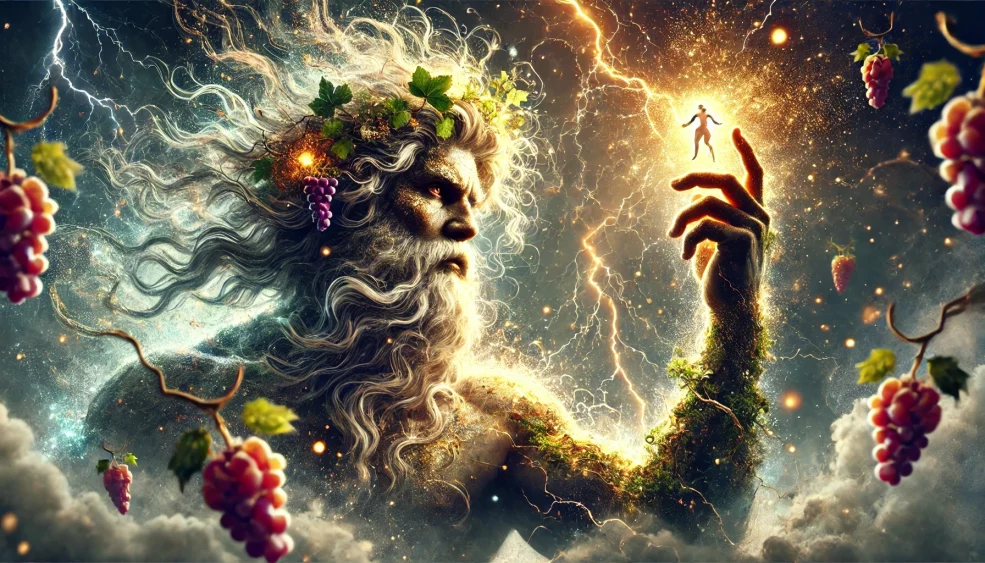
Festivals and Celebrations
People celebrated Dionysus with big festivals about wine, fertility, and wild partying. The Dionysia was one of the most important. It happened in Athens and had plays, parades, and shared drinking, like today’s big theater events. Another big event was the Bacchanalia. It started in secret and then became more public, where people took part in wild and ecstatic activities to honor the god. These festivals weren’t just about having fun; they also reinforced social connections and let people feel close to the divine. Here is a list of these big festivals:
- Dionysia: A festival in Athens with plays, parades, and shared drinking.
- Bacchanalia: At first secret rites, they became public events with wild and ecstatic worship.
The Dionysian Mysteries
Secretive religious ceremonies known as the Dionysian Mysteries gave members a deeper, magical connection with Dionysus. These ceremonies were like joining a special group where members went through specific procedures to gain insider knowledge and spiritual understanding. Initiation often meant symbolic death and rebirth, which mirrored Dionysus’ own myth stories. People took part in night ceremonies.
They consumed wine and performed wild dances to rise above normal consciousness and connect with the divine. These mysteries were important because they meant personal change and a strong sense of unity with the god, setting them apart from more public and shared forms of worship.
Big Stories About Dionysus
After checking out the ways Dionysus was admired, let’s look at some of the most interesting myths and stories that show his divine power and adventures.
Dionysus and King Pentheus
The story of Dionysus and King Pentheus is about punishment and what happens if you reject a god. Pentheus, the king of Thebes, did not believe Dionysus was a god. He tried to stop the joyful worship Dionysus inspired. Pentheus thought Dionysus and his followers were just hysterical. Even though he was warned, Pentheus refused to accept Dionysus and even put him in prison.
But Dionysus, being a god, escaped easily and decided to teach Pentheus a lesson. Dionysus tricked Pentheus into watching the Bacchae, his wild female followers, who were performing their rites on Mount Cithaeron. Pentheus, dressed as a woman to avoid getting caught, climbed a tree for a better view. However, Dionysus made the Bacchae go mad.
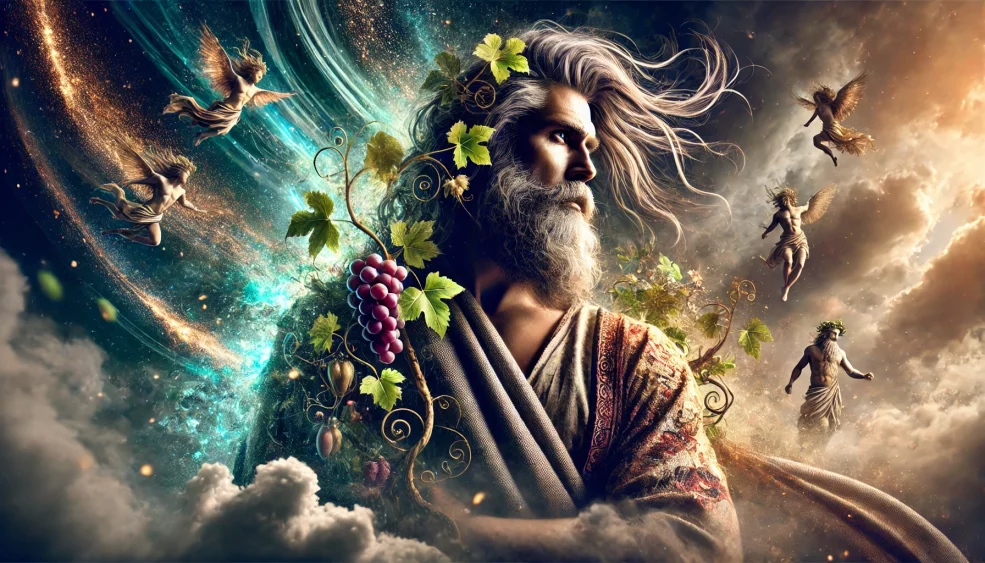
They thought Pentheus was a wild animal and, in their frenzy, they tore him apart limb from limb. This gruesome end was a clear reminder of the power of the gods and the dangers of pride. The story means themes of divine punishment and the thin line between sanity and madness, indicating the strong and often unpredictable nature of Dionysus.
Pentheus rejecting Dionysus led to a brutal punishment, illustrating the consequences of defying a god and the blurred boundary between reason and chaos.
The Trip to the Underworld
The story of Dionysus going to the underworld to save his mother, Semele, is interesting and shows his family loyalty and divine power. Semele, who was just a mortal woman and Dionysus‘ mother, died after seeing Zeus as he really was. Dionysus wanted to bring her back. He journeyed into the underworld, which was a scary place.
With the help of Hades, Dionysus was able to get Semele and brought her to Mount Olympus, where she became immortal and lived with the gods. This myth means Dionysus can go between life and death, showing he connects the mortal and divine worlds.
Meeting Mortals
The meetings of Dionysus with mortals include lessons and actions of gods. One important story is about a group of pirates thinking he was a rich young man. They tried to kidnap him for ransom. But Dionysus showed his divine nature. He turned the ship’s mast into a grapevine and the pirates into dolphins. Only the helmsman, who saw he was a god, was spared.
This story is about teaching a lesson to those who do not see his godly power. Another significant tale is about Dionysus and his role in the story of Ariadne. After Theseus left her on the island of Naxos, Ariadne was found by Dionysus. He fell in love with her and made her his wife. Moreover, he gave her a place among the gods.
These meetings mean Dionysus is both kind and angry. He can be very nice or very harsh.

Dionysus with Other Gods
Since we’ve looked at what Dionysus did with mortals, we will see his connections with the other Olympian gods and how they formed his part in Greek mythology.
Relationships with Olympian Gods
Dionysus’ connections with the other Olympian gods were full of both friendships and disagreements. For example, his connection with Hera, Zeus’ wife, was full of strain. Hera was jealous of Dionysus being born by Zeus and a mortal, Semele, and she tried to hurt him. This seems like what would happen in a family where a stepmom feels threatened by her husband’s child from another connection.
In contrast, Dionysus had a strong friendship with his father, Zeus, who supported his divine status and efforts. Meanwhile, Zeus protected him. This was important for Dionysus to be accepted by the gods.
Dionysus also had friendly dealings with gods like Apollo and Hermes. Apollo, the god of music and prophecy, and Dionysus appear to have shared mutual respect, and they often met in Greek rituals and festivals. Hermes, the messenger god, helped Dionysus in several stories, including guiding him to the underworld. These connections work like colleagues who get along on different projects. Here is a table that summarizes Dionysus’ key connections with other Olympian gods:

| Olympian God | Relationship with Dionysus | Key Aspects |
|---|---|---|
| Zeus | Father and supporter | Protection and favor |
| Hera | Stepmother and adversary | Jealousy and conflict |
| Apollo | Friend | Mutual respect and complementary roles |
| Hermes | Friend | Assistance and collaboration |
Dionysus in Art and Stories
After looking at Dionysus and his connections with other gods, we will now look into how he appears in old art and stories.
Depictions in Ancient Art
Dionysus has been a popular topic in old Greek art. He often appears in different forms that highlight his divine traits and myth stories. For example, vase paintings often see Dionysus in scenes of partying, surrounded by satyrs and maenads, who are his loyal followers.
These images are similar to modern-day pictures in books or movies that show characters and their stories visually. One example is the “Dionysus Cup” by Exekias, a black-figure kylix (drinking cup) that shows Dionysus lying on a ship with grapevines growing from the mast, symbolizing his divine power over wine and plants. People also made statues of Dionysus to capture his many sides.
For instance, the “Dionysus Sardanapalus” statue shows him in a relaxed, almost androgynous form, which highlights his link to both fertility and celebrating. Another notable picture is the “Hermes and the Infant Dionysus” by Praxiteles, which means Hermes carries the baby god, showing the protective link between them.
These artworks not only act as visual representations of Dionysus’ myths but also give insight into how the old Greeks perceived and celebrated their gods.

Here are some notable artworks showing Dionysus:
- “Dionysus Cup” by Exekias: A black-figure kylix shows Dionysus on a ship with grapevines.
- “Dionysus Sardanapalus”: A statue shows Dionysus in a relaxed, androgynous form.
- “Hermes and the Infant Dionysus” by Praxiteles: A sculpture shows Hermes carrying the infant Dionysus.
Dionysus, a popular figure in ancient Greek art, is often seen in various forms that emphasize his divine qualities and stories, like scenes of revelry on vase paintings or sculptures portraying his connection to fertility and celebration.
Literary References
Dionysus often appears in old Greek writings, with mentions that point out his many sides and the different parts of his myths. For example, in Homer’s “Iliad,” Dionysus is noted for his divine madness, which means he can make people act wild.
This can be like how modern writers may see a character who can change how others feel and act, making Dionysus a figure both awe-inspiring and scary. By mentioning Dionysus briefly, Homer helps set up his role among the gods and his impact on humans.
Euripides’ play “The Bacchae” gives a deeper look at Dionysus’ personality and how he affects people. The play shows Dionysus as both a god who seeks revenge and one who brings joy, highlighting the two sides of his nature. This duality can be compared to a modern anti-hero, a character who has both good and bad traits.
Euripides uses Dionysus to talk about themes like divine punishment and what happens when people deny who they really are. Similarly, Ovid’s “Metamorphoses” includes stories about Dionysus, like the story of King Midas and how the Tyrrhenian pirates were changed.
These stories highlight Dionysus’ power to change things and his link to nature, just as modern writers might use characters to look at themes of transformation and change.
Pantheon of All Greek Mythology Gods
To fully understand Dionysus’ place in the overall picture of Greek myths, it helps to look at the complete list of Greek gods and goddesses. This complete list of all the Greek Gods gives detailed info on each god, their areas, and their stories. This helps you see how they work and affect each other in myth stories.
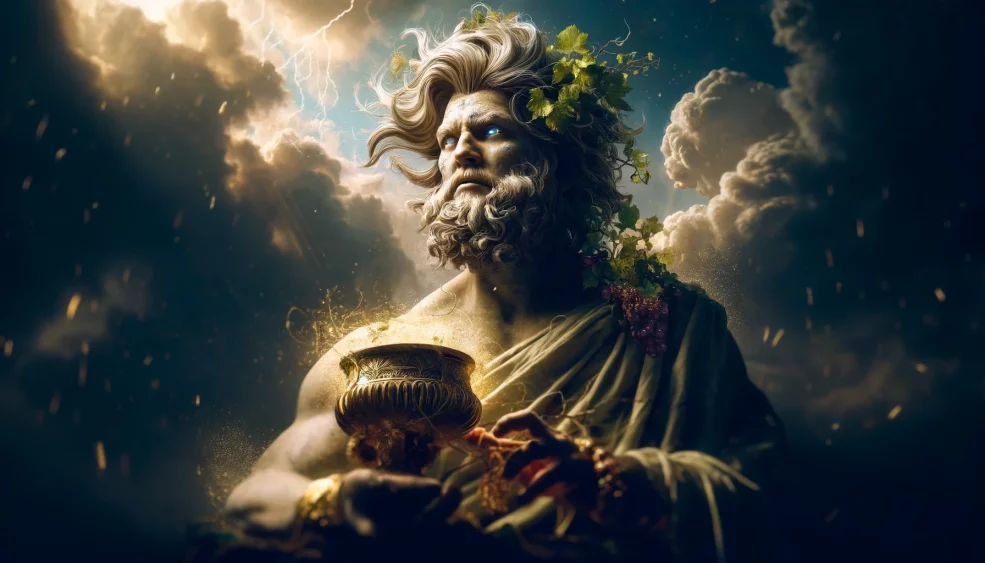
FAQs
1. What are the main symbols of Dionysus?
The main symbols of Dionysus include the thyrsus, grapevine, and leopard skin, each representing different aspects of his divine influence.
2. What are the Dionysian Mysteries?
The Dionysian Mysteries were secretive religious rites dedicated to Dionysus, involving initiation rituals and ecstatic worship.
3. How did Dionysus become a god?
Dionysus became a god through his unique birth from Zeus and Semele, his subsequent rebirth from Zeus’ thigh, and his acceptance into the Olympian pantheon.
4. What is the significance of wine in Dionysian worship?
The significance of wine in Dionysian worship lies in its symbolic representation of ecstasy, divine inspiration, and the blurring of boundaries between the mortal and divine realms.

